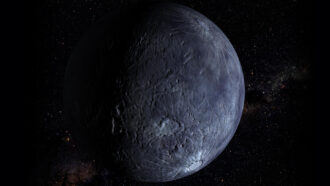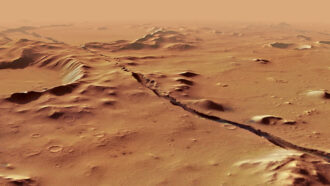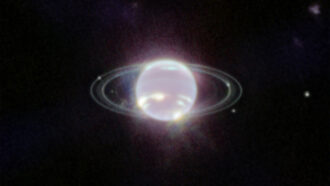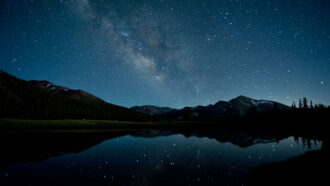Space

Educators and Parents, Sign Up for The Cheat Sheet
Weekly updates to help you use Science News Explores in the learning environment
Thank you for signing up!
There was a problem signing you up.
-
 Earth
EarthScientists Say: Equinox and Solstice
Equinoxes and solstices mark the maximums, minimums and mediums of hours spent in daylight.
-
 Space
SpaceSpacecraft traveling through a wormhole could send messages home
A probe going through a wormhole should be able to send messages home before such a tunnel forever closes, a new computer model finds.
-
 Planets
PlanetsSaturn’s moon Enceladus wears a thick blanket of snow
Pits on the frosty moon reveal the snow’s surprising depth, up to 700 meters (2,300 feet) in some places.
-
 Planets
PlanetsThe dwarf planet Quaoar hosts an impossible ring
Quaoar’s ring lies outside the Roche limit. That’s an imaginary line beyond which rings aren’t thought to be stable.
-
 Space
SpaceNASA is readying to send humans back to the moon
The launch of NASA's Artemis I is a huge step toward sending humans back to the moon and beyond.
By Liz Kruesi -
 Planets
PlanetsMars might still be volcanically active, quakes there suggest
Seismic rumblings picked up by NASA’s InSight lander hint at molten rock moving deep below the planet’s fractured surface.
-

-
 Space
SpaceJets may have sculpted rings of Cat’s Eye nebula
The Cat’s Eye nebula is one of the most complex of its kind. A 3-D model now reveals the source of that complexity.
-
 Physics
PhysicsExplainer: What are the different states of matter?
Most people know solids, liquids and gases — but what about the four other states of matter?
-
 Planets
PlanetsCheck out the first direct look at Neptune’s rings since the ’80s
The Voyager 2 spacecraft took the first pics of Neptune’s rings 33 years ago. Now, NASA’s James Webb telescope is providing a more detailed view of them.
-
 Space
SpaceThis physicist hopes to shake up our understanding of space
Adeene Denton uses a combination of geology, astrophysics and coding to better understand the structure of planets.
-
 Physics
PhysicsCosmic timeline: What’s happened since the Big Bang
Energy, mass and the cosmos' structure evolved a lot over the past 13.82 billion years — much of it within just the first second.
By Trisha Muro